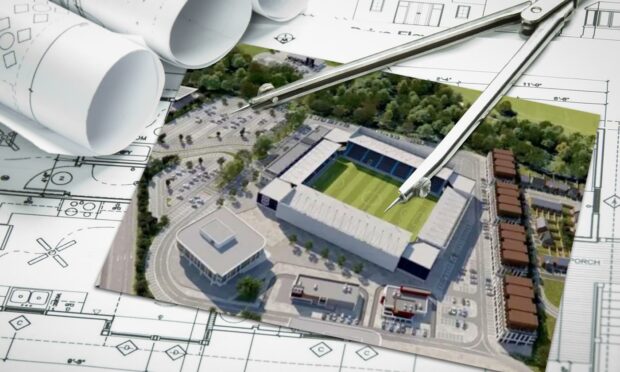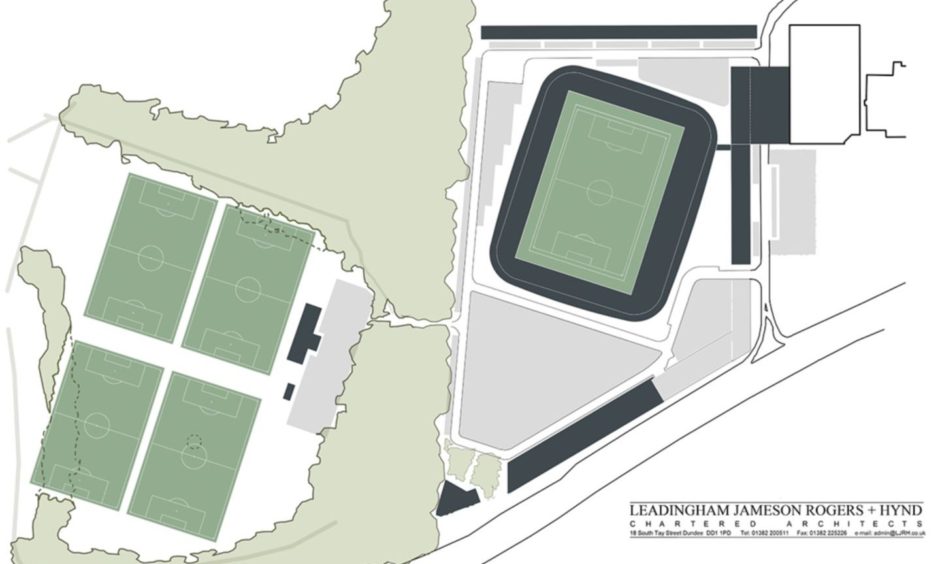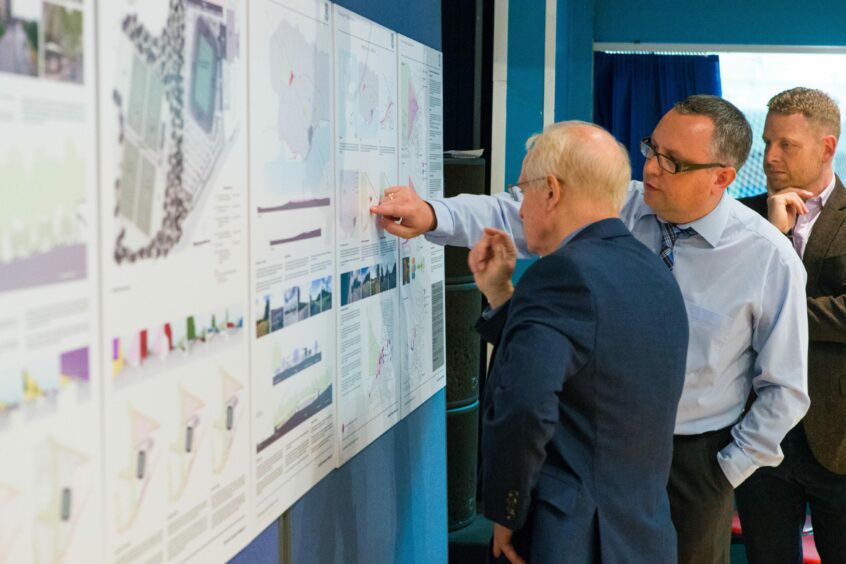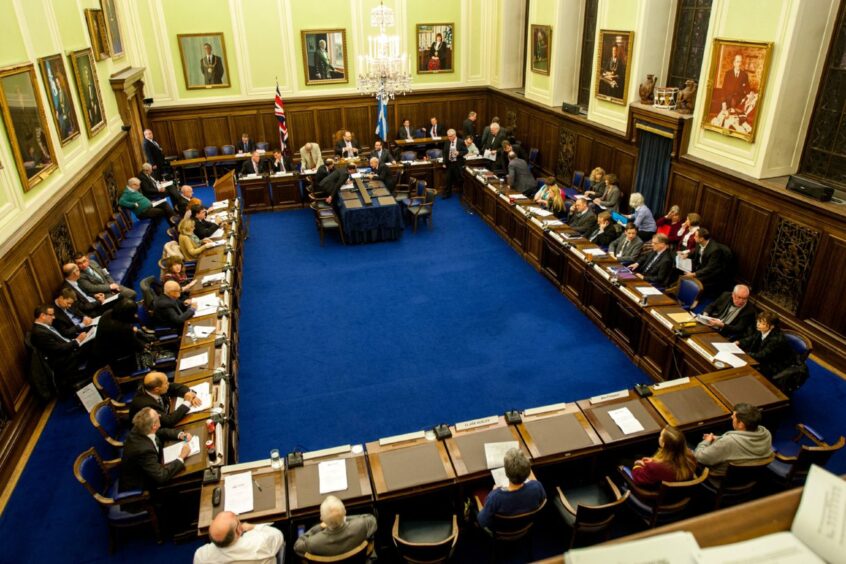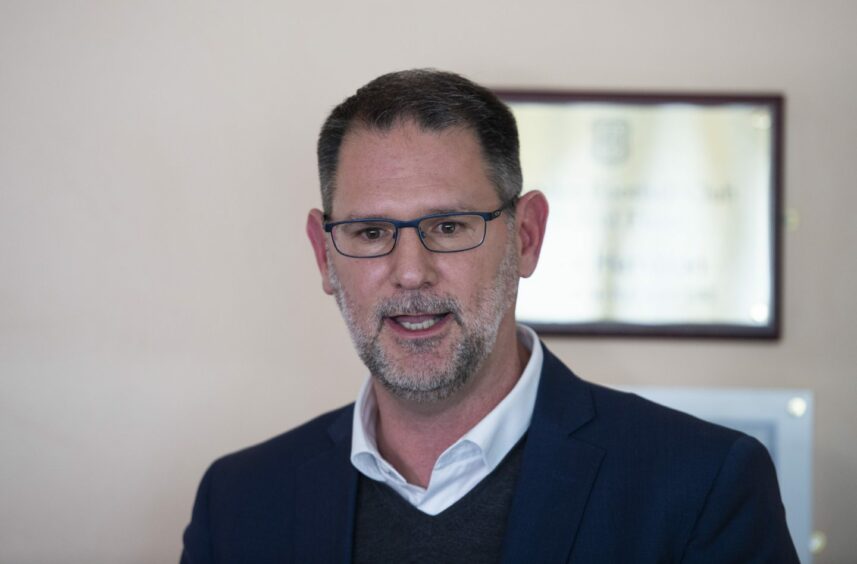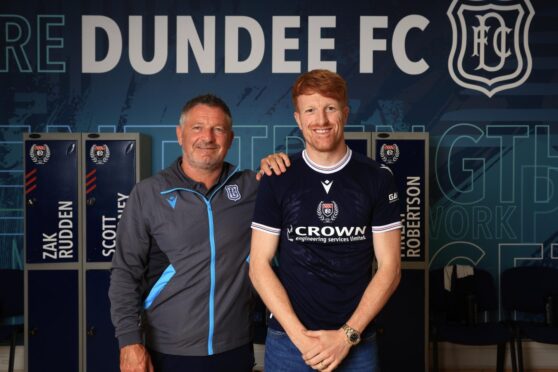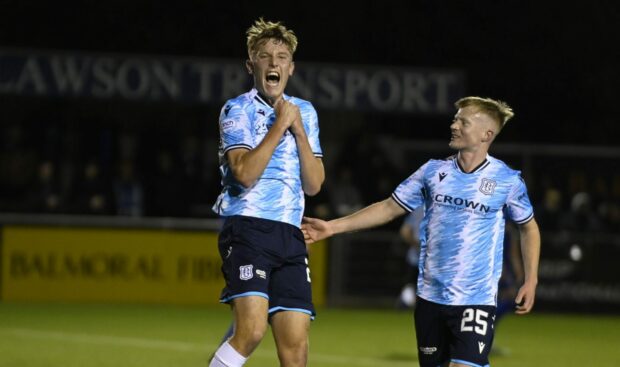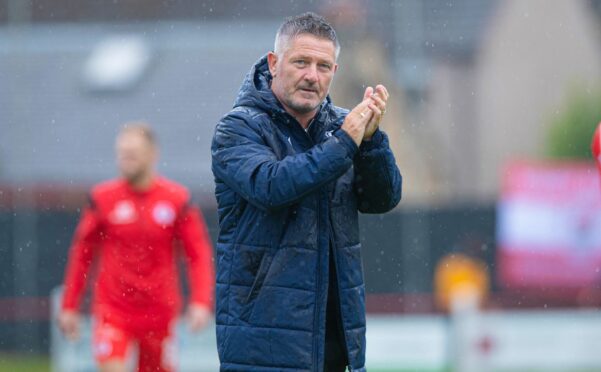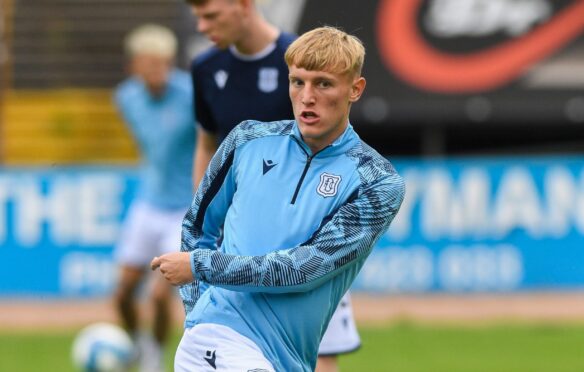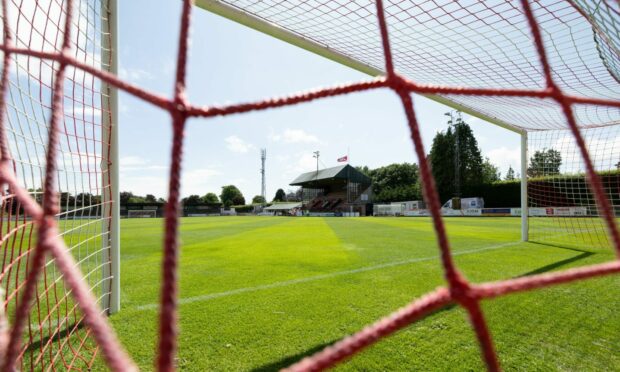It has been branded a pipe dream by some, while others see it as the next big step for Dundee FC.
Either way, plans to build a new stadium near Camperdown Park are a major talking point for football fans.
In March, club chief John Nelms set out his hopes of seeing the development come to fruition by 2024 – leaving just over two-and-a-half years for the project to be completed.
But before a brick is laid, the Dens Park outfit need to get over a series of planning hurdles to ensure they have all the right permissions in place.
And one planning consultant says that means the 2024 target is “ambitious”.
We look at the key steps Dundee need to take before the stadium – dubbed Nou Campy by fans – becomes a reality.
1. Proposal of application
This is the first step in the lengthy planning process for any major development.
PAN for short, the proposal for application is a small collection of documents submitted to the council which set out the general idea – in this case, a stadium and mixed use development.
It must also confirm where and when a public consultation will be held over the proposals.
Dark Blue Property Holdings Ltd – the firm owned by directors Nelms and Tim Keyes – submitted a PAN to Dundee City Council, back in 2017, which included details of a public exhibition that was held at Dundee Ice Arena in September that year.
However in May 2022 it submitted a fresh PAN to the local authority – setting out plans for a new public exhibition and outlining what the development would include.
2. Public consultation
The public consultation must be held within 12 weeks of the PAN being submitted to the council.
This gives people a chance to hear about the idea and submit their views – good or bad.
The developer must then collate this feedback for submission at the next stage of the planning process.
Scottish-based planning expert Tim Ferguson, of Ferguson Planning, says the public consultation must include a dedicated website showcasing the proposals and there should also be live Q&A sessions.
A Courier report on the previous consultation held in 2017 stated: “Dozens of fans packed into the public consultation when it opened at Dundee Ice Arena yesterday.
“Response from supporters was largely positive with most accepting that Dens Park is getting close to its sell-by date.
“However, some people raised concerns about the plans to create training pitches on land in Camperdown Park owned by Dundee City Council.”
The new exhibitions will be held at The Landmark Hotel on September 26 from 2-7.30pm and online on October 24 between the same times.
3. Full planning application
This is when the developer submits full, detailed plans to the council.
Documents will include specific details on the buildings and how they will look, and the feedback received during the consultation.
Dundee City Council has told Dark Blue Property Holdings that it must also submit documents addressing areas including:
- Cultural heritage including the impact on listed Camperdown House
- Landscape and visual such as how it would look from the nearby Kingsway
- Traffic and transport including the potential for a “significant impact” on the A90 trunk road and surrounding roads network
- Air quality impact due to increased traffic movements
- Ecological impact – specifically how it will affect bats and red squirrels on the site
A video produced by the club shows a slip road coming directly off the Kingsway into a car park for the new stadium.
With a minor access road the only other way to get into the site at present, addressing how the area would cope with an increase in thousands of traffic movements every week could be central to whether the application gets support.
One option could be for the club to fund junction upgrades, but this would be costly.
The full planning application can only be submitted once the PAN and consultation stages have been completed.
4. Decision
Councils have two options when it comes to deciding on an application.
Most minor projects will be determined by council planning officials within weeks of submission.
But major developments like the proposed stadium must go before a full meeting of councillors for the final say.
Planning expert Tim said: “The council would have four months to determine the application.
“Often they will use this time and more so extension may be necessary.
“It is likely it would be five to seven months from submission before it gets to committee – and that’s with a good wind.”
The elected members would be given a recommendation by the planning experts on whether to approve or reject the proposals, based on various policies and other considerations.
But councillors do not have to follow this recommendation.
It means that, even if the experts feel the development is inappropriate, the politicians could still give it the nod of approval.
A development of this size would likely come with a series of conditions that must be met before building work starts, or prior to the project being completed.
What other potential barriers could stadium plans face?
- Rejection of the application
If councillors chose to turn down the proposals, the club would have two options – go back to the drawing board and start the planning process again; or appeal to the Scottish Government. In the case of the latter, an independent planning expert would be appointed to consider the appeal. This route often proves successful for developers.
- Public opposition
One group – Friends of Camperdown House – previously said it was “horrified” at the extent of the stadium plans, which include houses on the outskirts of the park. Although public opposition does not necessarily mean an application will not go ahead, councillors would be asked to take these views into account. However, any formal objections must address planning issues, rather than general opinions.
- Funding
Without the involvement of any public bodies, millions of pounds would need to be sourced privately for the development. On the issue of money, Nelms told The Courier: “We have spent a lot of time in London and some of the funding options that were not afforded to us early doors are afforded to us now. We have eight meetings coming up with funders for different aspects of the stadium project.”
Is the 2024 goal realistic?
Planning consultant Tim says the goal of building the stadium by the end of 2024 is achievable, but unlikely.
He said: “2024 could be possible but very ambitious.
“The transport impact on the roads network will need to be considered, as well as residential amenity/noise, light pollution from the lighting columns and these sorts of things.
“Dundee will also need to ensure capacity in the infrastructure network and address whether there is housing need against already allocated sites in the city.”
